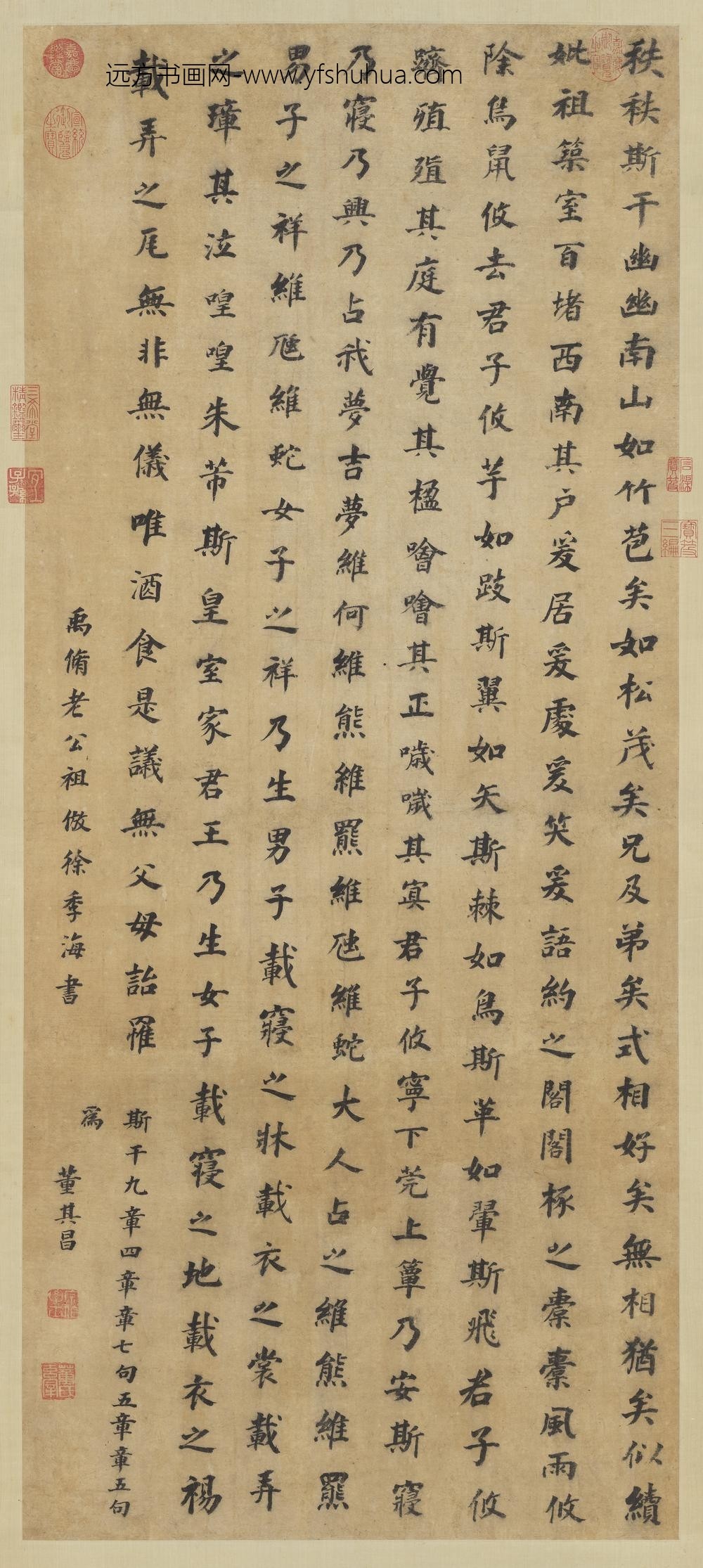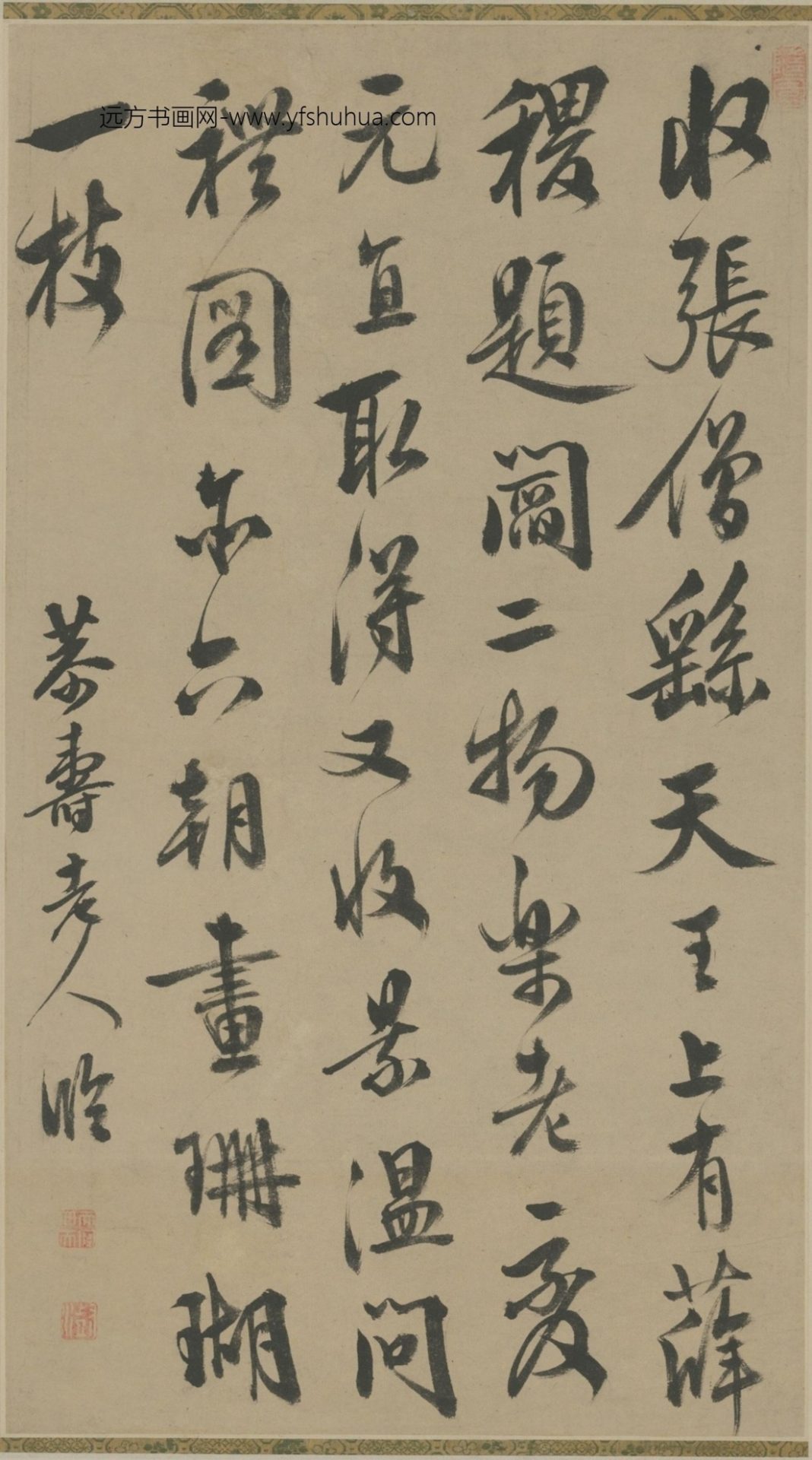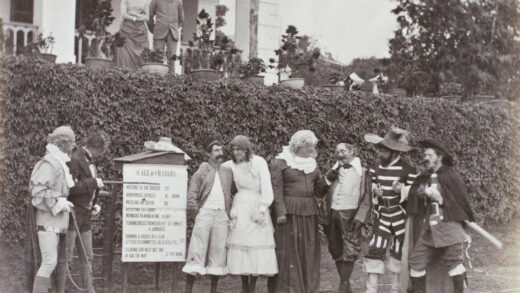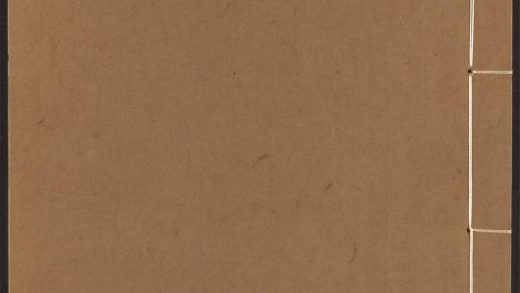【作品基本信息】
| 作者 | 董其昌 |
| 品名 | 书斯干之什图轴 |
| 朝代 | 明代 |
| 文件大小 | 18.03MB |
| 分辨率(DPI) | 300×300 |
| 像素大小 | 1642×3662 |
| 尺寸(CM) | 13.9×31.0 |
| 作品数量 | 1 |
| 作品收藏 | 台北故宫博物院 |
| 图片格式 | 默认提供TIF和JPG两个版本 |
基本数据
| 藏品类型 | 书法 |
| 品名 | 明董其昌书斯干之什 轴 “Ssu-kan” Chapter from the Book of Odes |
| 分类 | 法书 |
| 作者 | 董其昌 |
| 书体 | 楷书 |
| 数量 | 一轴 |
| 作品语文 | 汉文 |
| 释文 | 秩秩斯干。幽幽南山。如竹苞矣。如松茂矣。兄及弟矣。式相好矣。无相犹矣。似续妣祖。筑室百堵。西南其户。爰居爰处。爰笑爰语。约之阁阁。椓之槖槖。风雨攸除。鸟鼠攸去。君子攸芋。如跂斯翼。如矢斯棘。如鸟斯革。如翚斯飞。君子攸跻。殖殖其庭。有觉其楹。哙哙其正。哕哕其冥。君子攸宁。下莞上簟。乃安斯寝。乃寝乃兴。乃占我梦。吉梦维何。维熊维罴。维虺维蛇。大人占之。维熊维罴。男子之祥。维虺维蛇。女子之祥。乃生男子。载寝之床。载衣之裳。载弄之璋。其泣喤喤。朱芾斯皇。室家君王。乃生女子。载寝之地。载衣之裼。载弄之瓦。无非无仪。唯酒食是议。无父母诒罹。斯干九章。四章章七句。五章章五句。为禹修老公祖仿徐季海书。董其昌。 |
典藏尺寸
| 【位置】 | 【尺寸】(公分) |
| 本幅 | 119.9×51.5 |
质地
| 【质地位置】 | 【质地】 |
| 本幅 | 纸 |
印记数据【印记类别】【印记】作者印记宗伯学士作者印记董氏玄宰鉴藏宝玺嘉庆御览之宝鉴藏宝玺嘉庆鉴赏鉴藏宝玺石渠宝笈鉴藏宝玺三希堂精鉴玺鉴藏宝玺宜子孙鉴藏宝玺宝笈三编鉴藏宝玺宣统御览之宝
参考数据
| 【类别】 | 【参考数据】 |
| 收藏着录 | 石渠宝笈三编(延春阁),第五册,页2067 |
| 收藏着录 | 故宫书画录(卷二),第一册,页18 |
| 内容简介(中文) | 董其昌(公元一五五五-一六三六年),华亭(今上海)人。字玄宰,号思白。万历十六年进士,官至礼部尚书,谥文敏。天才俊逸,善谈名理,少好书画,临摹名迹,至忘寝食。行楷之妙,称绝一代。时以善书名者尚有邢侗、米万钟、张瑞图,时人谓邢张米董,又曰南董北米。 本幅楷书诗经小雅第九「斯干」之篇,仿徐浩(七O三-七八二年)书风,结字端凝,布字行间略呈倾侧,笔墨醇厚,劲力内蕴,皆自徐出,然清逸秀整之气韵,则有过之。 |
| 内容简介(英文) | Tung Ch’i-ch’ang (style name was Hsuan-tsai; sobriquet Ssu-po) was a native of Hua-t’ing (modern Shanghai). Having received his chin-shih civil service degree in 1588, he eventually served as Chief Minister of the Board of Rites and later received the posthumous title of Wen-min. He was an outstanding and untrammeled genius and a well-known theorist. As a youth, Tung Ch’i-ch’ang was so fond of practicing calligraphy and painting and copying works of art that he often neglected to sleep or eat. His running and standard scripts were marvelous and praised as being unparalleled in his times. Hsing T’ung, Mi Wan-chung, and Chang Jui-t’u were among Tung’s contemporaries who also excelled at calligraphy, and they were known collectively as “Hsing, Chang, Mi, and Tung.” Tung and Mi Wan-chung were also called “Tung of the South and Mi of the North.” This piece of calligraphy is a private transcription of the ninth chapter (“Ssu-yu”) from the “Hsiao-ya” section of the Book of Odes. Tung Ch’i-ch’ang imitated Hsu Hao’s (703-782) style of calligraphy, so the forms of the characters in this work appear like a frozen cascade with the vertical lines of characters leaning slightly to one side. Furthermore, the calligraphic style is gentle and graceful yet possessing a force of inner strength. Even though all these qualities derive from Hsu Hao’s calligraphy, Tung’s style also has a harmonious spirit of untrammeledness and elegance, which leads it to surpass that of Hsu Hao. |
【作品展示】





